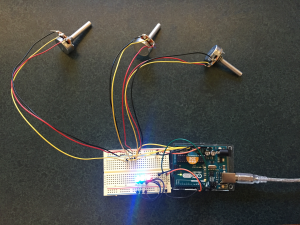Fishkin’s taxonomy provides a framework to think about different TUIs. The paper was published in 2004, more than 10 years ago, some examples are a little bit outdated, while many of them are still cutting edge today. I keep thinking about wearable devices while reading the paper. Some wearable devices such as Fitbit and Apple Watch have become ubiquitous and affordable in the past 5 years. As the name Apple Watch indicated, most of wearable devices are designed like watches that people can wear on wrists. According to Fishkin’s definition, they have a full embodiment, as the output device is the input device. The level of metaphor is also full: it has the metaphor of noun, as the physical shape and look of the wearable devices is analogous to the shape and look of traditional watches; it also has the metaphor of verb, as once you lift up your wrist as a gesture to read your watch, the digital screen will be activated automatically and display your biological stats as well as the real time. As people are used to “watch” time, now they can “watch” their biological time, such as heart rates, sleep, steps, etc.
Fishkin wrote at the end of the article that “the trend has been to increase the levels of embodiment and metaphor…as that occupied by the intersection of the Holmquist ‘tokens’ and the Holmquist ‘containers’.” The popularity of wearable devices today verifies this projection. The more that a TUI artifact resembles an ordinary object in appearance and in motion, perhaps the better its user’s experience could be. Minimizing cognitive overhead by associating the new learning with what people have already known is imperative, especially in industrial design.

